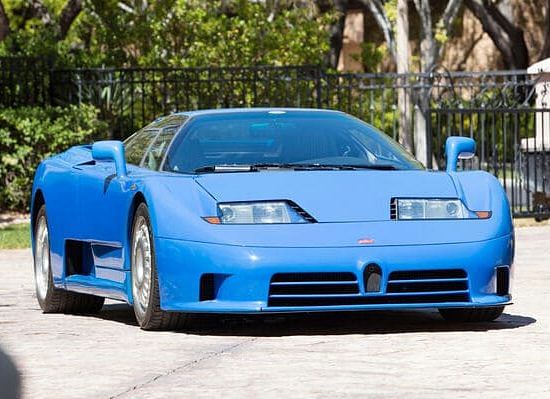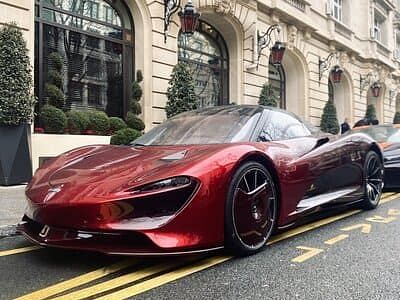Supercar Journey: From Lamborghini Miura to Bugatti Chiron
Hey there car enthusiasts! Have you ever dreamed of owning a supercar? Those cool cars with high performance that make everyone turn their heads when they pass by on the streets. Well, this time we’re going to review the history of supercars through the ages.
From the iconic classics of the 1960s to the cutting-edge hypercars of today, we’ll explore how these automotive marvels have evolved over the decades. Buckle up and get ready for a thrilling ride through time as we trace the journey of these speed demons and technological wonders!
The Beginning
Supercars have been around for decades. Initially, this term was used to describe high-performance sports cars with stunning designs. Over time, the definition of supercars continued to evolve following advances in automotive technology.

Lamborghini Miura
One of the first supercars that caught the world’s attention was the Lamborghini Miura. Launched in 1966, the Miura shook up the market with its revolutionary mid-engine design. This car became the precursor to modern supercars as we know them today.
The Miura’s V12 engine could produce up to 350 hp, a fantastic figure for the 60s era. No wonder the Miura immediately became the idol of celebrities and car collectors at that time. Its sky-high price also made the Miura even more exclusive.
The Evolution
After the Miura, various car manufacturers began to compete to launch their flagship supercars. Ferrari Daytona, Maserati Bora, to Porsche 911 Turbo came to enliven the supercar market in the 70s. The competition became increasingly fierce!
Entering the 80s, supercar technology became increasingly sophisticated. Manufacturers started using lightweight materials like carbon fiber to reduce weight. Turbo engines also became more popular to chase maximum power.
One of the 80s supercar icons was the Ferrari F40. This car became a symbol of luxury and high performance. With a top speed of 324 km/h, the F40 was once the fastest production car in the world. Its aggressive design made everyone mesmerized.
In the 90s, supercars became even crazier. The McLaren F1 broke the record for the fastest production car with a top speed of 386 km/h. This car also had a unique layout with a central driving position. Super advanced!

Bugatti EB110
Another champion in the 90s was the Bugatti EB110. This car had a quad-turbo V12 engine capable of delivering 550 hp. Its futuristic design made the EB110 look like a car from the future.
Entering the new millennium, supercars became even more insane. Hundreds of horsepower became commonplace. Manufacturers competed to make cars with more than 1000 hp! Crazy, right?
One of the iconic supercars in the early 2000s was the Ferrari Enzo. This car had F1 technology and was only produced in 400 units. Its sky-high price made the Enzo a target for collectors.
In the same era, Bugatti launched the phenomenal Veyron. This car had a quad-turbo W16 engine with over 1000 hp. Its top speed reached 407 km/h, a new record for a production car!
Today’s Supercar
Supercars continued to evolve until now. Materials became lighter, aerodynamics more sophisticated, and engine power continued to increase. Even some modern supercars have adopted hybrid technology for higher performance.
One of the latest supercars that has stolen attention is the Bugatti Chiron. This car has a fantastic 1500 hp power and can go up to 420 km/h. Chiron became the successor to the legendary Veyron.

McLaren Speedtail
Besides Chiron, there’s also the futuristic McLaren Speedtail. This car has an F1-inspired design with a 3-seat layout. Its power reaches 1036 hp thanks to an advanced hybrid engine.
Not to be left behind, Koenigsegg Jesko also caused a stir with its claim of a top speed of over 480 km/h. This car has a unique 9-speed transmission with super-responsive Light Speed Transmission (LST).
In this era of electrification, electric supercars have also started to emerge. The Rimac Nevera is one of the most anticipated. This electric car from Croatia has 4 motors with a total power of 1914 hp. Insane!
Although technology continues to evolve, the essence of supercars remains the same as before. High performance, stunning design, and exclusivity have become its hallmarks. Supercars have always been a symbol of luxury and the best engineering of their time.
Well, that’s a glimpse of the history of supercars through the ages. Pretty cool, right? Who knows, maybe someday you can own one of them. It’s okay to dream, isn’t it?
Conclusion
Supercars have undergone tremendous evolution since their first appearance. From the Lamborghini Miura to the Bugatti Chiron, innovations continue to be made to achieve maximum performance. Although technology changes, the essence of supercars remains the same as high-performance cars with stunning designs.
In the future, supercars will continue to evolve following trends in electrification and autonomous technology. But one thing is for sure, supercars will always be the dream objects of automotive enthusiasts around the world.
More About Supercars
After knowing its history, below are few facts in questions and answers form that you might want to know about supercars.
What is the definition of a supercar?
A supercar is a very high-performance sports car with a stunning design and advanced technology. They are usually produced in limited numbers with sky-high prices.
What’s the difference between a supercar and a hypercar?
A hypercar can be considered a “supercar on steroids”. Its performance is more extreme, its technology more sophisticated, and its price much more expensive than ordinary supercars.
What is the fastest supercar currently?
The Bugatti Chiron Super Sport 300+ holds the record for the fastest production car with a top speed of 490.48 km/h.
Are all supercars petrol-powered?
No. There are now several electric supercars such as the Rimac Nevera and Pininfarina Battista.
How much does the cheapest supercar cost?
Some “entry-level” supercars like the Audi R8 or McLaren 570S start from around $150,000 or 2.2 billion IDR.
“From Lamborghini Miura to Bugatti Chiron: Explore the thrilling evolution of supercars! Insane power, stunning designs, and cutting-edge tech in automotive history.”
